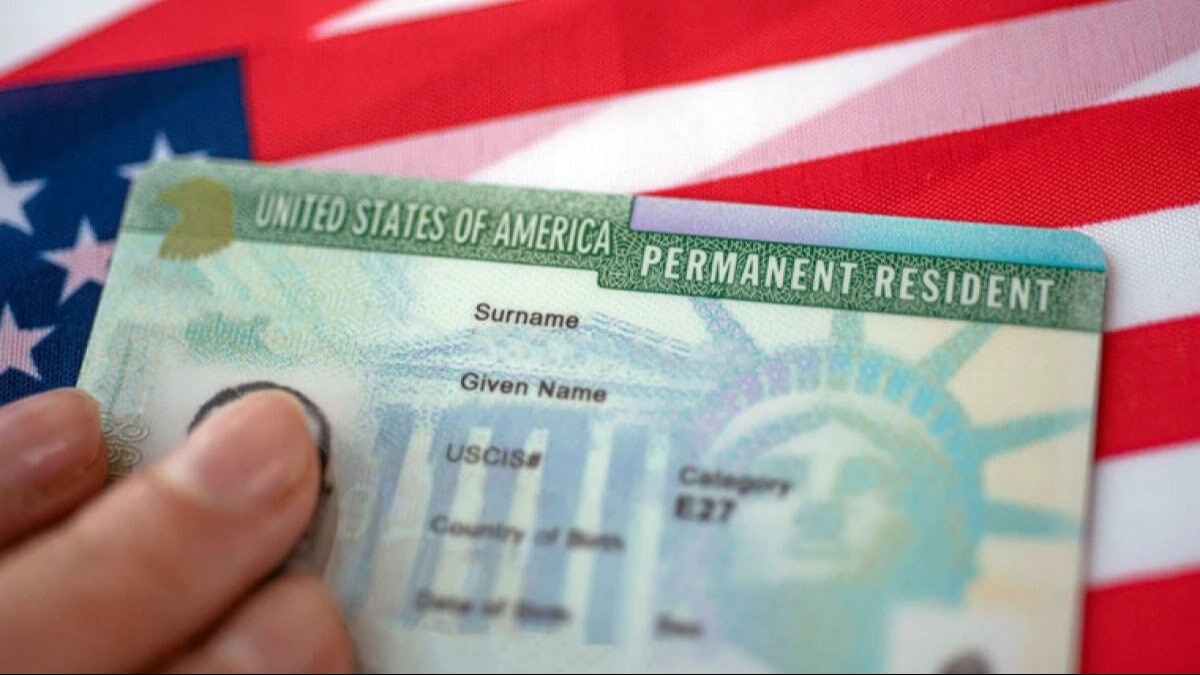2024-04-15 11:49:09
More than a million Indians are stuck in a long queue for green cards, according to US Citizenship and Immigration Services (USCIS) data. This wait is due to a cap on the number of green cards given to people from a specific country and a low annual quota.
The USCIS data shows that many highly skilled professionals from India, including doctors, engineers and scientists, are facing extremely long wait times, potentially decades, to gain permanent residency in the United States, according to a Forbes report.
These long wait times can cause problems for both individuals and their families, and can also make it harder for the US to attract and keep talented workers, says the National Foundation for American Policy (NFAP) after analysing the USCIS data.
RISE IN NUMBER OF INDIANS WAITING FOR GREEN CARD
According to the Forbes report, the the National Foundation for American Policy (NFAP) conducted a study of the USCIS data as of November 2, and found that over 1.2 million Indians, including dependents, are currently waiting for green cards in the top three employment-based categories.
First Preference (EB-1): This employment-based first preference, also known as EB-1, category includes workers with extraordinary abilities, outstanding professors and researchers, and multinational executives or managers. An estimated 143,497 Indians are waiting in this backlog.
Second Preference (EB-2): This employment-based second preference, also known as EB-2, category includes professionals with advanced degrees and people with exceptional ability in science, arts or business.
An estimated 838,784 Indians are waiting in this backlog. The USCIS data shows this backlog has grown significantly in recent years.
“The USCIS data from 2020 suggest that the Indian backlog in the EB-2 category rose by more than 240,000 or 40% in approximately three years,” according to the Forbes report.
Third Preference (EB-3): This employment-based third preference, also known as EB-3, category includes skilled workers and professionals whose jobs require a bachelor’s degree.
According to USCIS, 138,581 principals are in the employment-based third preference, also known as EB-3. NFAP estimates an additional 138,581 dependents for a total of 277,162 Indians in the third preference backlog.
The NFAP analysed USCIS data and found 1,259,443 Indians in the top three employment-based immigration categories as of November 2, 2023.
Indians’ longer waits mean they’re more likely to have spouses and children, leading to an underestimation of dependents.
Without Congressional action, the backlog is projected to grow. The Congressional Research Service (CRS) estimated the backlog for Indians in these categories to reach 2,195,795 by FY 2030, taking 195 years to clear, reported Forbes.
WAIT TIME FOR INDIANS LONGER THAN OTHER NATIONALS’
The wait times for Indians are much longer than for people from other countries, including China and the Philippines, because of a limit on the number of green cards given to people from each country. This is called the “per-country limit”.
The NFAP estimates that nearly 148,000 Chinese professionals and their dependents are waiting in the employment-based green card backlog, with approximately 83,000 in the second preference and 41,000 in the third preference, reported Forbes.
The Visa Bulletin, which is released monthly by the US Department of State, shows the priority date required to be eligible to receive a green card in each employment-based preference category.
Currently, for Indians in the second preference category, their application must have been filed before May 15, 2012, to be eligible, according to the State Department.
“Applicants for immigrant visas who have a priority date earlier than the application date in the [Visa Bulletin] chart may assemble and submit required documents to the Department of State’s National Visa Center,” according to the State Department.
IMPACT AND CALL TO ACTION
These long wait times can cause a lot of stress and uncertainty for individuals and their families. It can also make it harder for the US to attract and retain talented workers from India.
The long wait for green cards is because of two main things in US law: the yearly limit on green cards for jobs, set at 140,000, and the rule that no country can get more than 7% of those green cards.
This rule hits hard on skilled workers from big countries like India, China, and the Philippines.
Without changes to the current system, the backlog is expected to continue to grow. The National Foundation for American Policy is calling on Congress to take action to address this problem, as stated in the report.
green card for indians, us green card waiting time, us green card waiting, us green card waiting time by country,us green card waiting time for indian, us green card waiting time for indian eb-1, green card usa waiting time, us green card waiting period
Source link
12 total views , 1 views today
